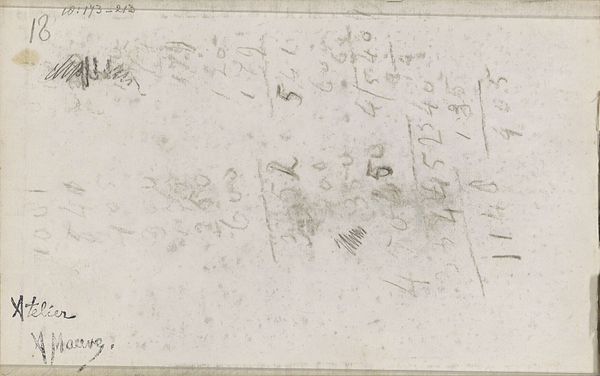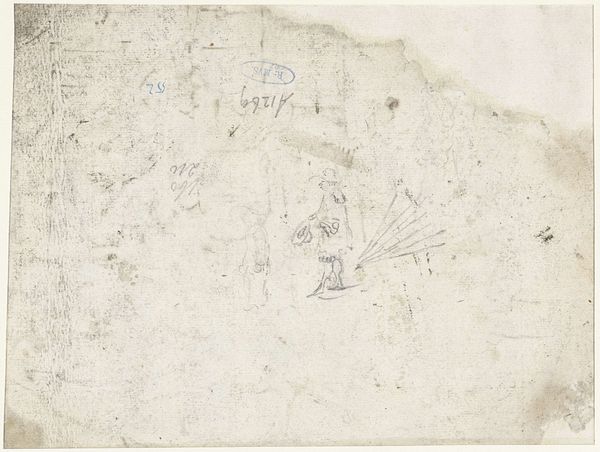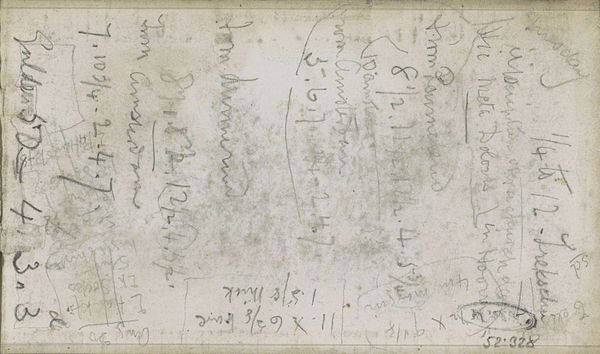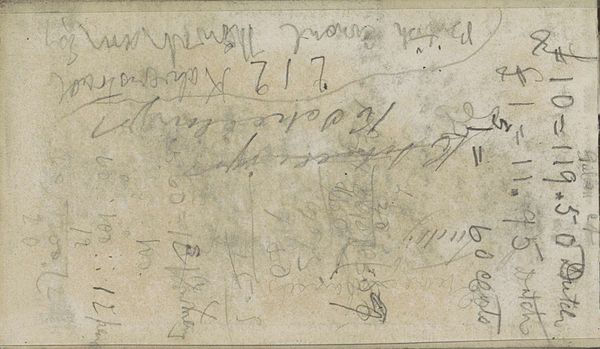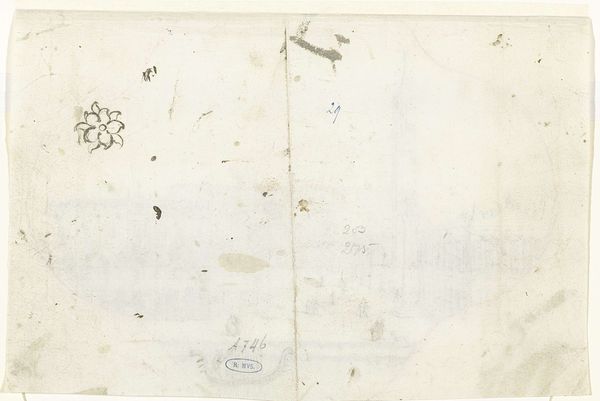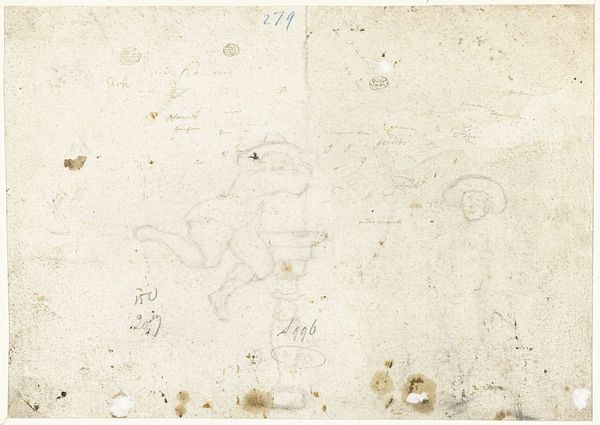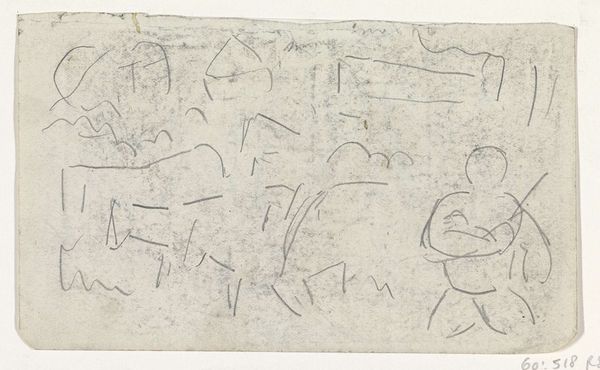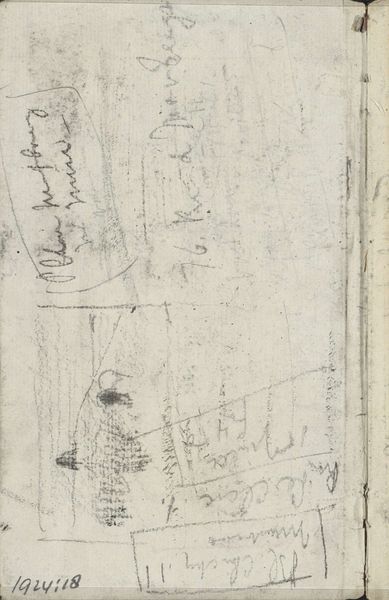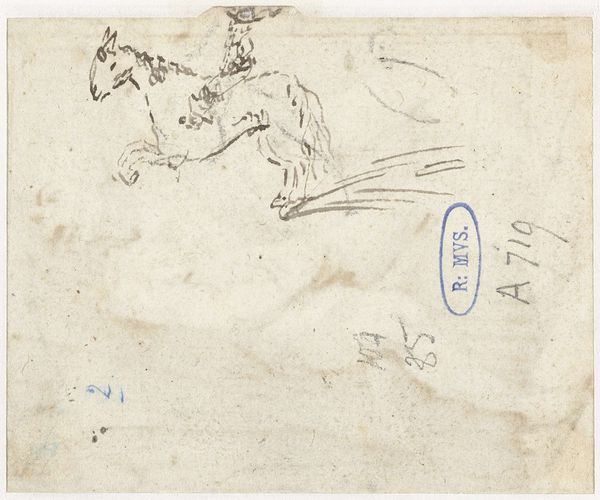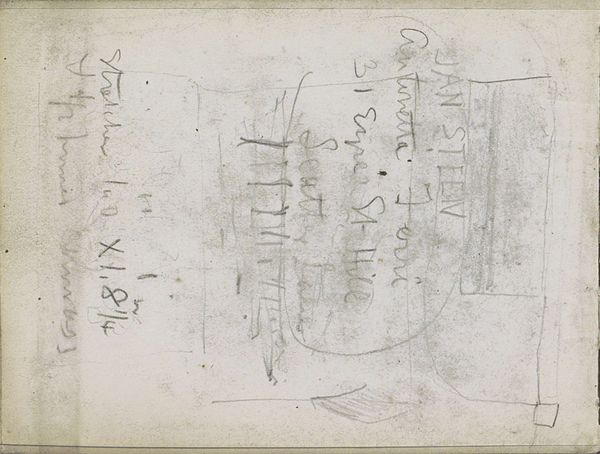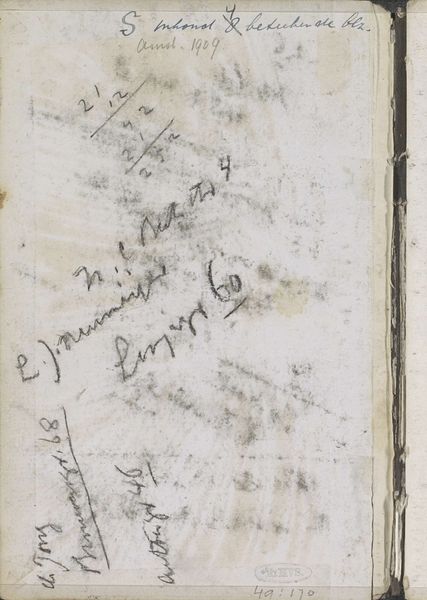
drawing, paper, ink
#
portrait
#
drawing
#
baroque
#
dutch-golden-age
#
figuration
#
paper
#
ink
#
sketch
Dimensions: height 128 mm, width 210 mm
Copyright: Rijks Museum: Open Domain
Editor: Here we have "Studieblad met kindertekeningen," or "Study Sheet with Children's Drawings," possibly from 1649, by Harmen ter Borch. It's done in ink on paper and lives here at the Rijksmuseum. It feels like peering into a child's imagination, seeing the world through simplified lines and forms. What do you see in this piece? Curator: What strikes me is how this drawing challenges conventional notions of childhood during the Dutch Golden Age. We often imagine children from this era in highly posed, formal portraits reflecting their family's status. Yet, this sheet offers something rawer, more intimate. The seeming randomness of the sketches—the ambiguous figures and lines—hints at a less structured, perhaps even subversive, perspective on children and their creative expression. Editor: Subversive? That's a strong word! Curator: I use that word intentionally. Think about it: Whose gaze are we prioritizing here? Is it the child's? Is it the artist's? Or is it ours? In a time where childhood was often about molding individuals to fit societal roles, this work allows us to consider children outside those constraints. These scribbles might be seen as resisting the very idea of a singular, adult-imposed narrative of what childhood should be. Editor: So, it's almost like Ter Borch is giving a voice to the voiceless, or at least, visualizing their inner world? Curator: Precisely. And in doing so, he subtly questions the power dynamics at play, offering a counter-narrative to the idealized representations so common at the time. This wasn't just art; it was an act of quiet rebellion, recognizing the unique perspective and creativity inherent in a child's world. Editor: That's fascinating. I came in thinking it was just a simple sketch, but I'm leaving with a whole new perspective on childhood and art's role in challenging social norms. Thank you. Curator: Indeed. And hopefully, it encourages all of us to value the unedited expressions of children and those who find themselves on the margins.
Comments
No comments
Be the first to comment and join the conversation on the ultimate creative platform.
